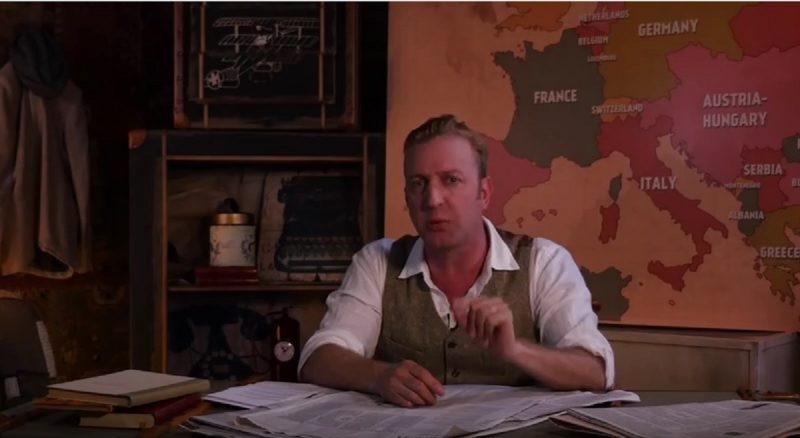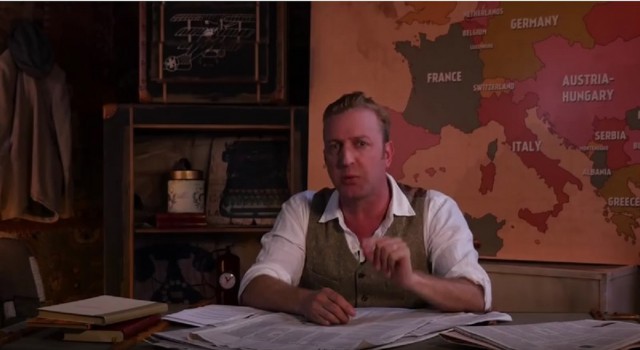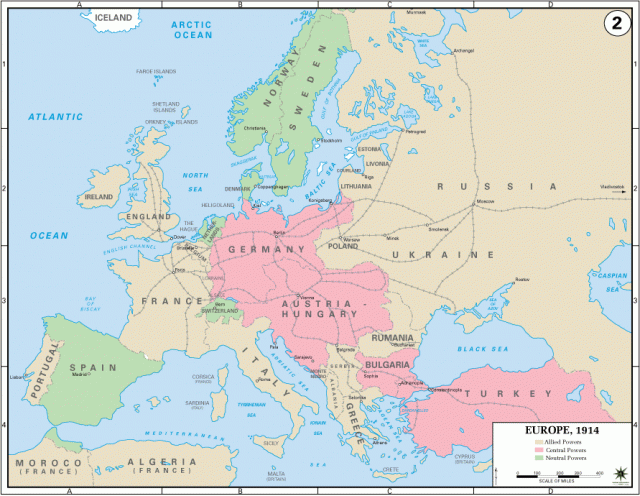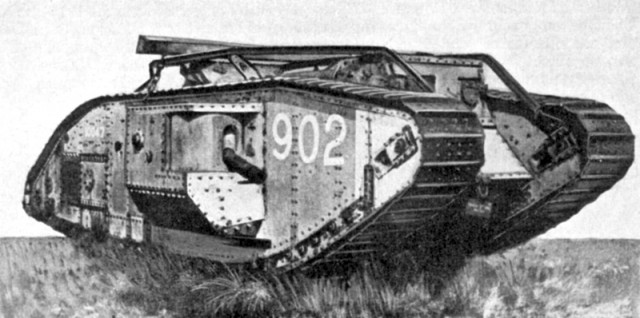By Paul K. DiCostanzo Managing Editor – The Good News Review
Between the years 1918 and 1939, humanity only knew the First World War as “The war to end all wars,” or “The great war.” The conflict lasted from August 1914 to November 1918, and completely shaped the future of the 20th century politically, militarily, and culturally. Despite the wars immeasurable impact, its history has faded and distorted in the collective 21st century global memory. The YouTube channel project The Great War hosted by Indiana Neidell, has been changing that over the last 14 months. Their project has done so by retelling and reporting the events of the war, as they happened, 100 years ago each week. The Great War project has run since July 28th, 2014, and will conclude in November 2018 concurrent with the wars full centennial anniversary. The Great War project is nothing less than a revolutionary four year undertaking, all for the effort of preserving and teaching vital human history.
World War I was a horrendous military conflict sparked by the assassination of Austro-Hungarian Arch Duke Ferdinand and his wife Sophie on June 28th, 1914 in Sarajevo. The murder was committed by Serbian nationalists, and supported by known Serbian nationalists groups Young Bosnia, and The Black Hand. Both secret organizations whose members included officials of the Kingdom of Serbia state, and had the greater aim of separating the southern-Slavic territories of the Austro-Hungarian Empire, and joining them into a sovereign Yugoslavian nation. Ferdinand’s murder quickly escalated into a great diplomatic crisis between the major European powers.
In properly concluding official Serbian involvement in Ferdinand’s assassination, Austro-Hungary presented Serbia their July Ultimatum. Serbia rejected one of the ten demands of the ultimatum: the allowance of Austrian investigators to visit Serbia. The demands by Austro-Hungry were intentionally provocative to begin a war, and Austro-Hungary declared war on the Kingdom of Serbia when Serbia did not except their terms in its entirety.
The Austro-Hungarian war effort initiated the mobilization to war for the great European powers. In a compact explanation of complicated events, several major nations ultimately obliged their previously established treaty obligations to the other. The Russian Empire came to the defense of Serbia. The German Empire aided their official ally Austro-Hungary. France ultimately invoked their alliance with Russia in protecting Serbia, specifically when Germany attacked Luxembourg. Further, Germany in lock-step with Austro-Hungary then invaded France through neutral Belgium. In doing so, Germany brought Great Britain into the conflict, as Britain had previously guaranteed the protection of Belgian neutrality in 1839.
Though the conflict would later include many other world powers, most notably the Ottoman Empire, Bulgaria, and the United States, the game was afoot. Over four years, fighting would breakout in theaters world wide. In short, “Good night, Vienna.”
Despite the wars critical impact, the conflict is often viewed through the lens of its contribution to causing the Second World War. Moreover, the modern age knows little about it in general, and is only exposed to its history through programs like the British Commonwealth’s annual Poppy Appeal, the French monument to Marshall Foch, and the American Veterans day that falls on the anniversary of the armistice, November 11th. Though unintentional, it is a devastating outcome given the conflicts significance.
Through the Great Wars revolutionary retelling, it is allowing World War One to stand on its own proverbial two feet. Without using the benefit of foreknowledge of future events, it gives the viewer the prospective of the people living in the world 100 years ago. Following a conflict that grew exponentially each day, without an end in sight.
While of course delving into a greater understanding of the grand strategy of the Allies and Central powers, The Great War provides special episodes dedicated to paramount individual figures both politically and militarily. They also share tactical and technological battlefield innovations, intelligence efforts, the inevitable cultural impact on the home front of the belligerent nations, and answer viewer submitted questions.
With The Great War’s approach there are countless challenges that allow their production to commence. Producing at least one 10 minute episode each week requires tireless efforts of micro-research to achieve accurate history and cultivate relevant media. Over the span of four years, it is clear to the outside observer they have set the bar for themselves very high. TGNR has reached out to the The Great War for comment about the challenges and experiences they have faced during their initial 14 months of production, but have not responded to these inquiries at the time of the publication of this article.
It is clear that war, any war, is never good news. Yet given the cost of this titanic struggle, any lessons from its history being lost is a tragedy. The unique and creative preservation of history, regardless of what it may have entailed, is good news. As The Great War is such an otherwise unprecedented project, they’re supported by the crowd-funding site Patreon to finance their efforts.
The combination of a dynamic approach, ironclad dedication, and the financial support of motivated individuals to capture the First World War’s history will not go under reported, or under appreciated for long. The Great War’s YouTube Channel currently has a growing audience of over 160,000 subscribers.
Republished with permission from the Good News Review



